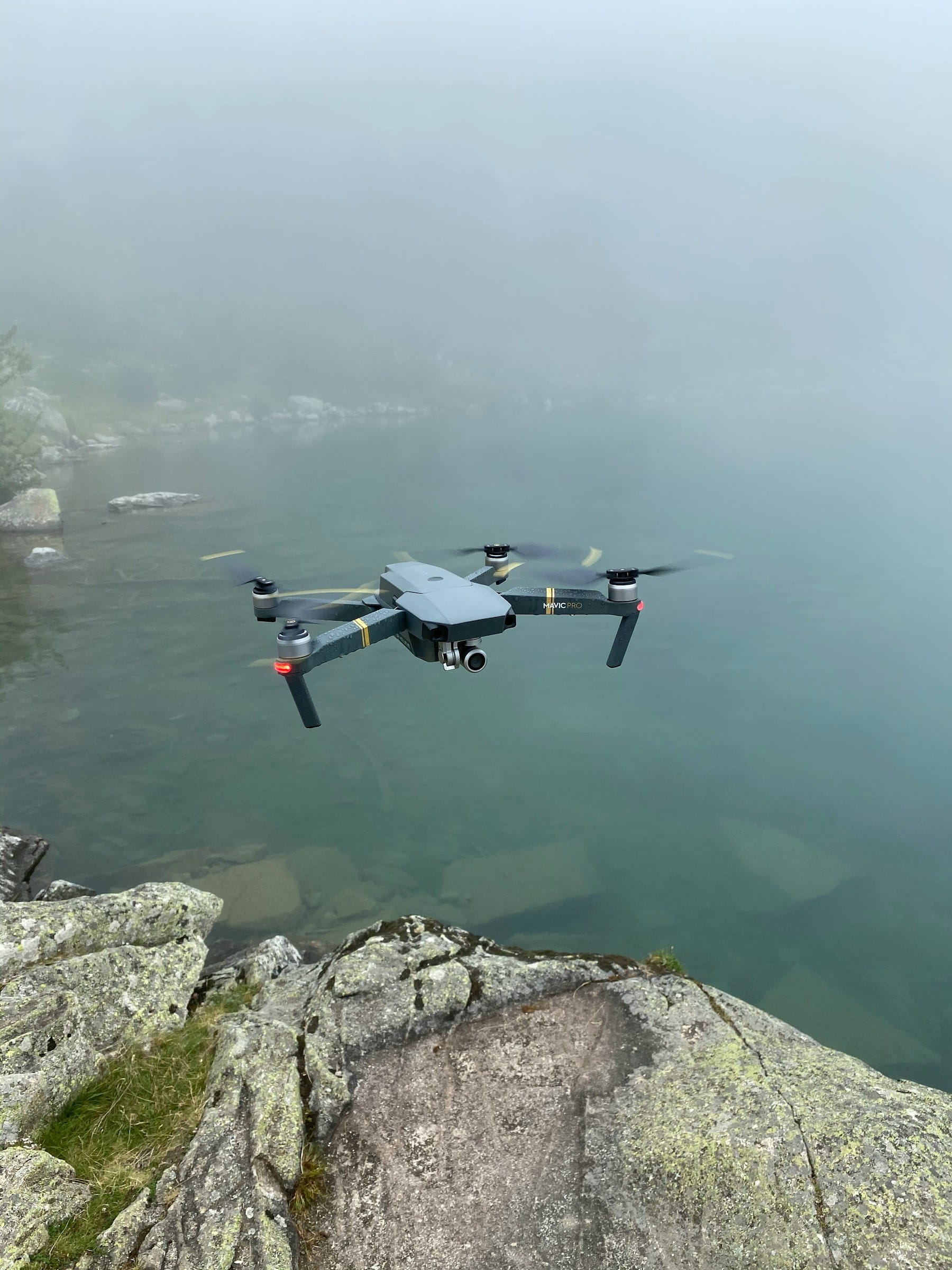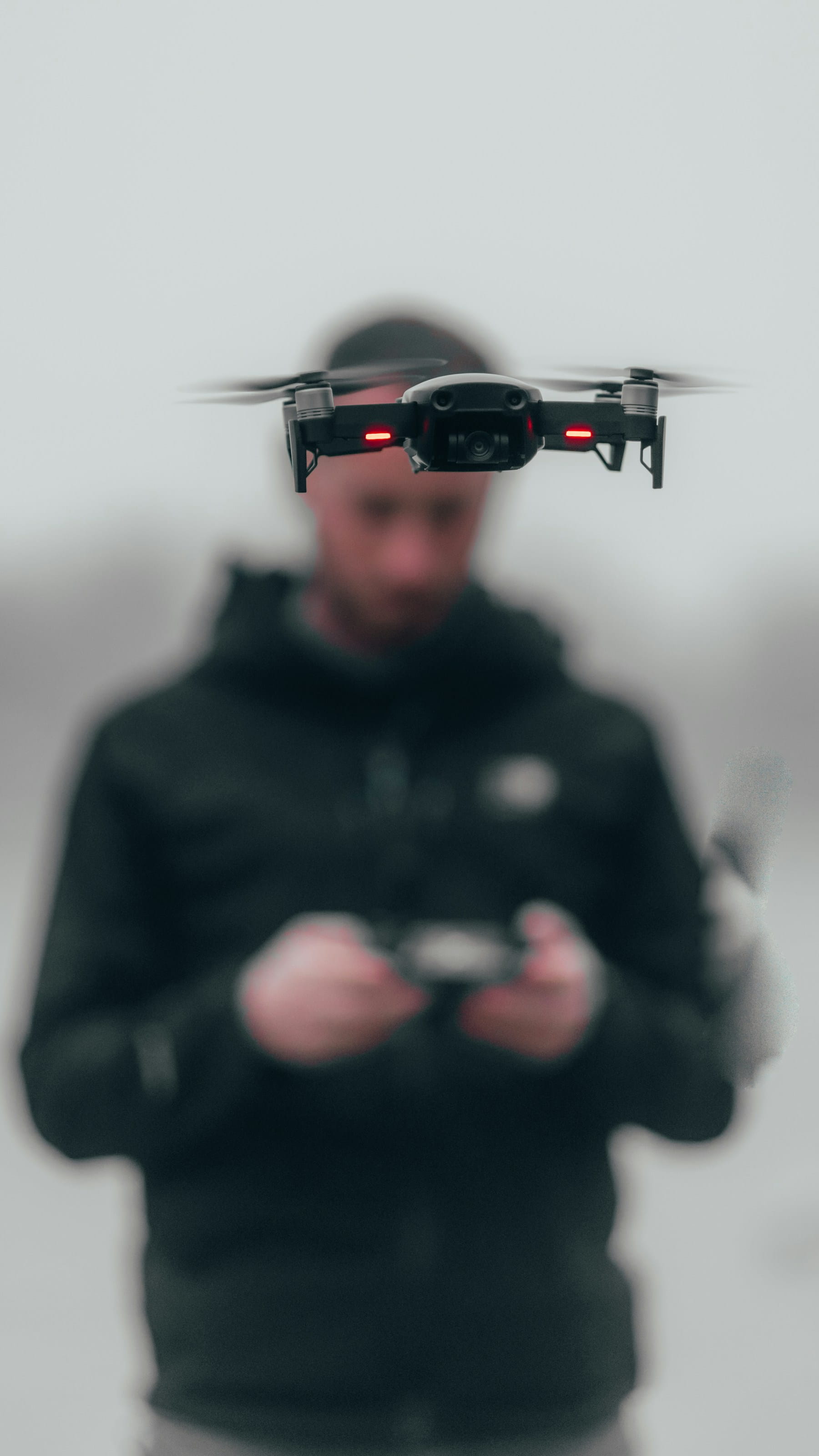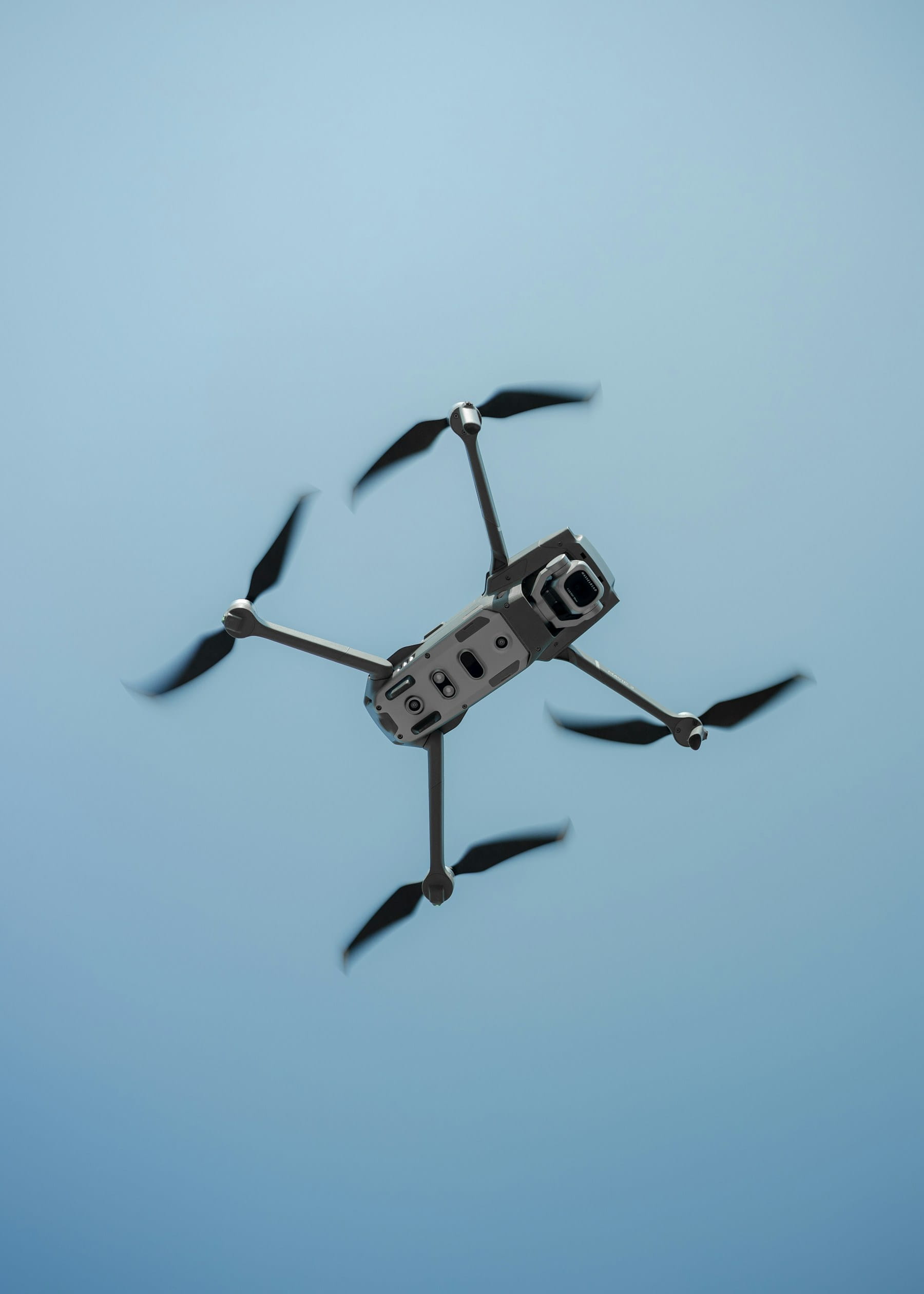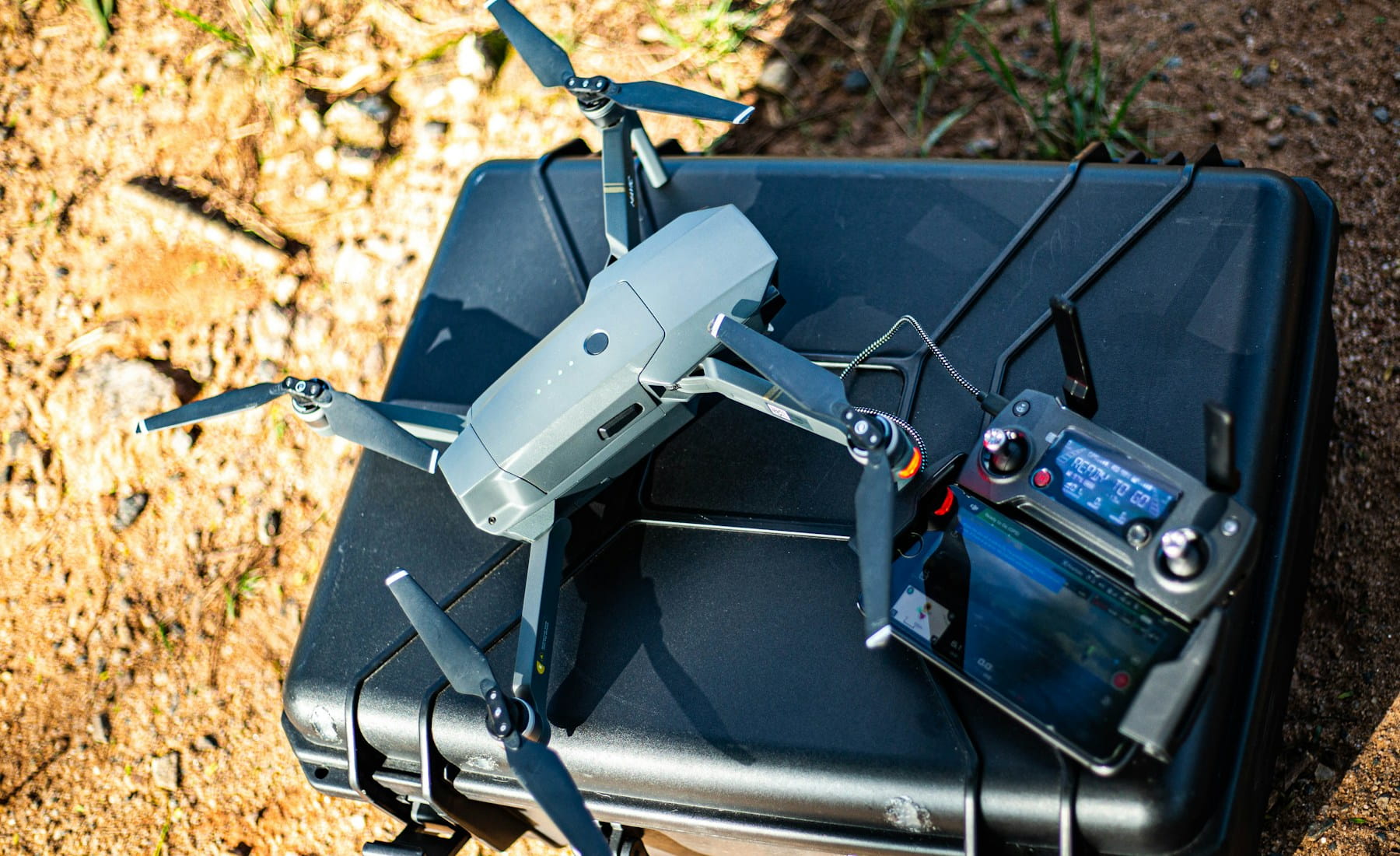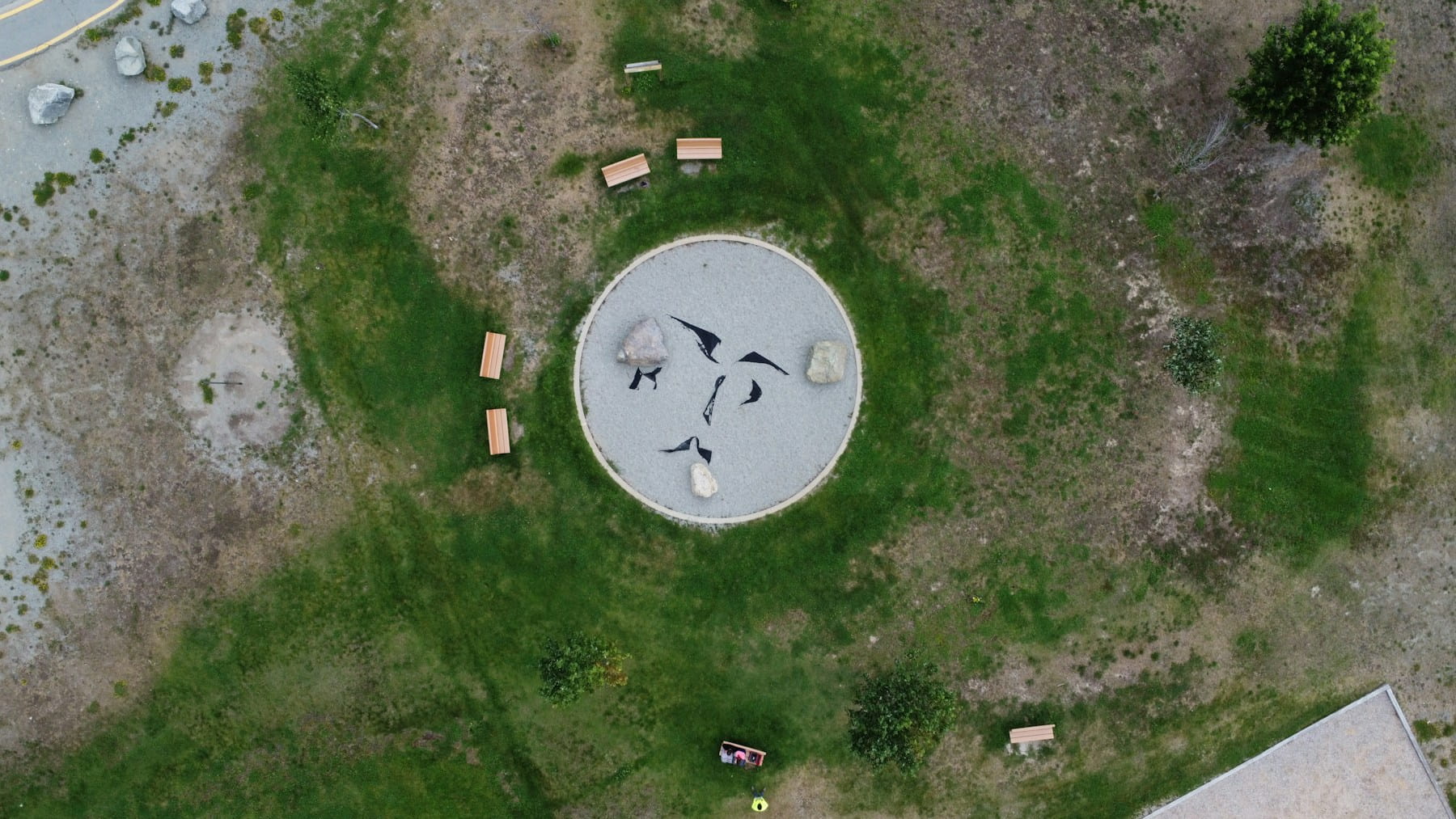What is Drone Data Processing?
Drone data processing converts raw aerial imagery and sensor data into actionable intelligence through photogrammetric reconstruction techniques. This computational transformation analyzes overlapping images to generate accurate 3D models, orthomosaics, and point clouds that enable precise measurements, analysis, and decision-making across industries from construction to agriculture.
When aerial footage comes back from a mission, that raw data represents just the starting point. The real value emerges through processing—transforming thousands of individual images into actionable intelligence that drives business decisions.
Drone data processing has become the backbone of commercial operations across industries. From construction sites tracking progress to agricultural fields monitoring crop health, the ability to convert raw aerial imagery into meaningful insights determines project success. Professional drone operations software integrates processing workflows with mission planning and data management to streamline the entire workflow.
Table of contents
- Core processing workflows
- Essential software tools and platforms
- Processing techniques and methodologies
- Hardware requirements for efficient processing
- Quality control and accuracy standards
- Output formats and deliverables
- Cost considerations and service options
- Common challenges and solutions
- Frequently Asked Questions
- Implementation Considerations
- In Summary
Core processing workflows
Most drone data processing follows predictable workflow patterns, though specific steps vary by application and software platform. Understanding these workflows helps teams optimize their processing capabilities and integrate with broader drone flight planning operations.
Image preparation and quality assessment
The workflow begins with data import and organization. Processing software reads image files, extracts metadata, and creates project databases. Initial quality checks identify problems like motion blur, exposure issues, or insufficient overlap that could compromise results.
Georeferencing establishes real-world coordinate systems for processed outputs. Projects using ground control points require manual measurement and input of precise coordinates. RTK-enabled drones may provide sufficient accuracy without additional control points, though proper flight data monitoring remains essential for quality assurance.
Feature detection and matching
Processing engines detect distinctive features within each image using algorithms like SIFT (Scale-Invariant Feature Transform) or ORB (Oriented FAST and Rotated BRIEF). These features serve as reference points for matching corresponding locations across multiple photographs.
Feature matching identifies the same physical points captured from different camera positions. Robust matching across the image set enables accurate camera pose estimation and scene reconstruction. Modern platforms leverage machine learning to improve matching accuracy in challenging conditions.
Camera calibration and pose estimation
Bundle adjustment algorithms simultaneously solve for camera positions, orientations, and internal parameters like focal length and distortion coefficients. This step produces a sparse point cloud showing detected features in three-dimensional space.
Camera calibration accounts for lens distortion, ensuring geometric accuracy in final outputs. Poor calibration leads to systematic errors that propagate through subsequent processing steps, affecting the reliability of measurements critical for surveying applications.
Dense reconstruction
Dense matching algorithms analyze pixel-by-pixel relationships between images to generate detailed point clouds. These calculations are computationally intensive, often representing the longest processing phase.
Multi-view stereo techniques examine overlapping image regions to estimate depth at each pixel location. According to industry best practices for 2025, maintaining 70-80% image overlap ensures robust dense reconstruction results. The resulting dense point clouds contain millions of measurement points describing surface geometry.
Mesh generation and texturing
Point clouds undergo mesh generation to create continuous surface models. Triangulation algorithms connect individual points into polygonal meshes suitable for visualization and measurement.
Texture mapping projects original image colors onto mesh surfaces, creating photorealistic 3D models. This step requires careful handling of lighting variations and exposure differences between source images.
Orthomosaic creation
Orthomosaic generation removes perspective distortion from aerial images, creating geometrically accurate maps essential for construction inspections and asset inspection workflows. Each pixel represents a consistent ground sample distance, enabling precise measurements.
Color balancing and seamline optimization create visually uniform mosaics from images captured under varying lighting conditions. Edge blending eliminates visible boundaries between adjacent photographs.
Essential software tools and platforms
The drone data processing landscape includes commercial platforms, open-source solutions, and cloud-based services, each offering distinct advantages for different operational needs.
Commercial processing platforms
Pix4D provides comprehensive photogrammetry capabilities with industry-specific modules for surveying, agriculture, and inspection applications. The software handles complex projects efficiently but requires significant computational resources and licensing investment.
Agisoft Metashape offers professional-grade processing with flexible workflow customization. Its batch processing capabilities support large-scale operations, while detailed quality reports help validate output accuracy according to ASPRS positional accuracy standards.
Reality Capture excels at handling massive datasets with impressive processing speeds. The software's pay-per-export licensing model suits occasional users, while unlimited licenses serve high-volume operations managing multiple drone fleets.
Open-source alternatives
OpenDroneMap represents the most mature open-source processing solution. This command-line toolkit processes aerial imagery through photogrammetric reconstruction, producing orthomosaics, point clouds, and 3D models without licensing costs.
WebODM provides a web-based interface for OpenDroneMap, making open-source processing accessible to users preferring graphical interfaces. The platform supports distributed processing across multiple machines for improved performance.
Open-source solutions require technical expertise for setup and configuration. Users must manage dependencies, troubleshoot issues, and potentially modify source code for specific requirements.
Cloud-based processing services
DroneDeploy offers simplified workflows through cloud processing, handling complex computations on remote servers. This approach reduces local hardware requirements while providing scalable processing capacity.
Maps Made Easy focuses on rapid turnaround times for basic orthomosaic and 3D model generation. The service suits operators needing quick results without extensive customization options.
Cloud services trade convenience for control, limiting customization options while simplifying technical management. Internet connectivity requirements and ongoing subscription costs represent additional considerations for scaling drone businesses.
Processing techniques and methodologies
Different processing approaches suit varying project requirements, accuracy standards, and computational constraints.
Photogrammetric reconstruction methods
Traditional photogrammetry relies on identifying conjugate points across multiple images to estimate three-dimensional coordinates. This approach works well with standard RGB cameras and produces accurate results when proper ground control exists.
Bundle adjustment optimization minimizes reprojection errors across the entire image block. The process iteratively refines camera parameters and point coordinates until achieving optimal geometric consistency.
Direct georeferencing using RTK positioning can eliminate ground control point requirements for many applications. However, accurate camera lever arm measurements and precise timing synchronization become critical for maintaining positional accuracy.
Machine learning integration
Modern processing platforms incorporate machine learning algorithms for improved feature detection and matching. Neural networks trained on aerial imagery often outperform traditional algorithms in challenging conditions like repetitive textures or low contrast scenes.
Semantic segmentation models can automatically classify objects within processed imagery. These capabilities support applications like vegetation mapping, infrastructure monitoring, and change detection without manual interpretation.
Deep learning approaches require substantial training data and computational resources. Organizations must balance improved capabilities against increased complexity and processing requirements.
Specialized sensor processing
Multispectral imagery requires radiometric calibration to convert digital values into meaningful reflectance measurements. Processing workflows must account for illumination variations, sensor response characteristics, and atmospheric effects.
Thermal processing involves temperature calibration using sensor-specific parameters and environmental corrections. Accurate temperature measurements require careful handling of emissivity values and atmospheric compensation for applications like power line inspections and wind turbine inspections.
LiDAR processing follows different workflows emphasizing point cloud classification and filtering. Ground point extraction, vegetation removal, and surface model generation require specialized algorithms distinct from photogrammetric approaches.
Hardware requirements for efficient processing
Processing performance depends heavily on hardware specifications, with different components affecting various workflow stages. Organizations planning their equipment management must balance processing needs with budget constraints.
CPU considerations
Photogrammetric processing benefits from high core counts, as many algorithms parallelize effectively across multiple threads. Modern processors with 16 or more cores significantly reduce processing times compared to entry-level alternatives.
Clock speed remains important for single-threaded operations like project setup and final output generation. Balanced configurations combining high core counts with reasonable clock speeds offer optimal performance across diverse processing tasks.
Memory and storage requirements
RAM requirements scale with project size and complexity. Simple orthomosaic generation might operate effectively with 32GB, while large 3D reconstruction projects can consume 128GB or more during peak processing phases.
Fast storage systems improve performance throughout processing workflows. NVMe SSDs reduce data loading times, while high-capacity traditional drives provide cost-effective storage for completed projects and archives.
Processing generates substantial temporary files during intermediate steps. Adequate free space—often 5-10 times the source image size—prevents processing failures due to insufficient disk space.
GPU acceleration
Graphics processing units can dramatically accelerate specific processing steps like dense matching and mesh generation. CUDA-enabled cards from NVIDIA generally offer broader software compatibility than AMD alternatives.
GPU acceleration benefits vary by software platform and project characteristics. Some workflows see 10x performance improvements, while others show minimal gains depending on algorithm implementation and hardware utilization.
Professional graphics cards provide superior computational performance and memory capacity compared to gaming-focused alternatives. However, consumer cards often deliver acceptable performance at lower cost for smaller operations.
Quality control and accuracy standards
Maintaining consistent output quality requires systematic quality control procedures and adherence to established accuracy standards. The ASPRS Positional Accuracy Standards for Digital Geospatial Data, Edition 2 provides the industry-recognized framework for evaluating positional accuracy.
Ground control point strategies
Ground control points establish accurate coordinate references for processed outputs. Proper GCP placement ensures geometric accuracy while minimizing systematic errors across project areas essential for construction site monitoring.
GCP distribution should provide coverage across the entire flight area with particular attention to boundary regions. Uneven distribution can lead to accuracy variations, with poorly covered areas showing increased positional errors.
Target design affects measurement precision and reliability. High-contrast targets with clear geometric patterns provide better automatic detection compared to natural features or improvised markers.
Accuracy assessment methods
Checkpoint measurements provide independent accuracy validation using points not included in processing calculations. These measurements reveal actual output accuracy under operational conditions.
Statistical analysis of checkpoint residuals identifies systematic errors and accuracy patterns. Root mean square error calculations provide standardized accuracy metrics comparable across projects and processing approaches.
Professional surveying applications often require compliance with ASPRS positional accuracy standards. These specifications define acceptable error levels for various map scales and applications, with recent updates incorporating requirements for UAS mapping operations.
Processing parameter optimization
Camera calibration quality significantly affects final output accuracy. Self-calibration works well for most projects, but pre-calibrated camera parameters improve results when available from controlled calibration procedures.
Dense matching parameters balance processing time against point cloud density and accuracy. Conservative settings produce more reliable results at the cost of longer processing times and reduced detail levels.
Quality report analysis helps identify processing issues and optimization opportunities. Reprojection errors, tie point distributions, and camera calibration statistics provide insights into result reliability that inform flight reports and client deliverables.
Output formats and deliverables
Processed drone data generates various output formats suited to different analysis requirements and software compatibility needs.
Raster outputs
Orthomosaics represent the most common drone processing output, providing geometrically corrected aerial imagery suitable for mapping and measurement applications. GeoTIFF format ensures broad compatibility with GIS software and analysis tools.
Digital elevation models (DEMs) and digital surface models (DSMs) capture terrain and surface height information. These raster products support volumetric calculations, flood modeling, and line-of-sight analysis critical for cell tower inspections.
Specialized outputs like vegetation indices (NDVI, GNDVI) derive from multispectral imagery processing. These products highlight vegetation health, stress patterns, and growth variations for agricultural and environmental monitoring.
Vector products
Point clouds contain detailed three-dimensional coordinate information for each measured location. LAS format provides industry-standard storage with classification codes and color information.
3D mesh models offer continuous surface representations suitable for visualization and virtual reality applications. Common formats include OBJ, PLY, and proprietary formats for specific software platforms used in client portals.
Vector extraction from processed imagery can generate CAD-compatible linework for infrastructure mapping and surveying applications. This process often involves manual digitization or semi-automated feature extraction.
Analysis-ready datasets
Processed outputs often require format conversion or additional processing for specific analysis workflows. Cloud-optimized GeoTIFF (COG) formats enable efficient web-based visualization and analysis through interactive mapping interfaces.
Tile pyramid generation supports multi-scale visualization in web mapping applications. This preprocessing step improves user experience when viewing large orthomosaics at various zoom levels.
Database integration requires spatial indexing and metadata management for efficient data retrieval and analysis. PostGIS and other spatial databases provide powerful platforms for large-scale data management.
Cost considerations and service options
Organizations face multiple options for drone data processing, each with distinct cost structures and operational implications.
In-house processing capabilities
Building internal processing capacity requires significant upfront investment in software licenses, hardware infrastructure, and staff training. Commercial software licenses can cost thousands of dollars annually, while hardware requirements add substantial capital expenses.
Operational costs include software maintenance, hardware upgrades, and staff time for processing activities. Complex projects may require specialized expertise that increases labor costs or necessitates external consulting.
Processing capacity utilization affects cost efficiency. Organizations with consistent processing volumes benefit from internal capabilities, while sporadic users may find external services more economical.
External processing services
Professional processing services offer predictable per-project pricing with guaranteed turnaround times. Service providers handle hardware maintenance, software updates, and technical support, reducing client operational complexity.
Quality levels vary significantly between service providers. Some focus on rapid, automated processing for basic outputs, while others offer human-supervised workflows for precise surveying applications.
Service selection criteria should include accuracy guarantees, format compatibility, customer support quality, and pricing transparency. References from similar organizations provide valuable insights into service performance.
Hybrid processing approaches
Many organizations combine internal capabilities for routine processing with external services for complex or time-sensitive projects. This approach balances cost efficiency with operational flexibility for organizations managing drone compliance across multiple project types.
Cloud-based processing platforms offer middle-ground solutions, providing software access without hardware investment while maintaining processing control. Pay-per-use pricing models suit variable processing volumes.
Common challenges and solutions
Drone data processing presents recurring challenges that experienced operators learn to anticipate and address through proven solutions.
Image quality and coverage issues
Insufficient image overlap leads to processing failures or accuracy degradation in affected areas. Flight planning software should ensure minimum 70% forward overlap and 60% side overlap for reliable photogrammetric reconstruction following pre-flight checklist protocols.
Motion blur from excessive aircraft speed or vibration creates matching difficulties and reduces output quality. Proper gimbal calibration and appropriate flight speeds prevent most blur-related issues identified through pilot training.
Lighting variations across large survey areas create exposure differences that complicate orthomosaic generation. Graduated neutral density filters or multiple flight times can minimize lighting inconsistencies.
Processing performance optimization
Large datasets can overwhelm processing systems, leading to crashes or excessive processing times. Project segmentation into manageable blocks enables processing completion while maintaining acceptable accuracy.
Memory management becomes critical for complex projects approaching system limits. Processing parameter adjustment and temporary file management help optimize resource utilization.
Parallel processing capabilities vary between software platforms and hardware configurations. Understanding bottlenecks helps optimize workflow scheduling and resource allocation.
Accuracy and quality assurance
Systematic errors in processed outputs often trace to inadequate ground control or poor camera calibration. Regular accuracy validation through independent checkpoints helps identify and correct these issues.
Processing artifacts like holes in point clouds or color variations in orthomosaics indicate parameter adjustment needs. Understanding artifact causes enables targeted corrections without complete reprocessing.
Data management and archival
Project data volumes grow rapidly, creating storage and organization challenges. Automated backup procedures and data retention policies prevent data loss while managing storage costs.
Long-term data accessibility requires format standardization and metadata preservation. Future software compatibility depends on using open formats when possible and maintaining adequate documentation.
Frequently Asked Questions
What processing software is best for beginners starting drone data processing?
For beginners, cloud-based platforms like DroneDeploy or Pix4Dcloud offer the most accessible entry points with simplified workflows and automatic processing. These services require minimal technical expertise and no hardware investment. As operations mature, teams often transition to desktop software like Pix4DMapper or Agisoft Metashape for greater control and advanced features. Open-source solutions like WebODM provide cost-effective alternatives but require more technical knowledge for setup and optimization.
How long does typical drone data processing take?
Processing times vary dramatically based on project size, output requirements, and hardware capabilities. Simple orthomosaic generation for a 50-acre site might complete in 2-4 hours on modern hardware, while detailed 3D modeling with high-resolution point clouds can require 8-24 hours or more. Cloud processing services often complete projects in similar timeframes. Organizations should plan for longer processing times when accuracy requirements demand multiple quality control iterations or when working with specialized sensors like multispectral or thermal cameras.
Do all drone mapping projects require ground control points?
Ground control points are not universally required but significantly improve positional accuracy. RTK or PPK-enabled drones can achieve accuracies of 2-5 cm horizontal and 5-10 cm vertical without GCPs, suitable for many applications. However, surveying projects, legal boundary mapping, or compliance with strict accuracy standards typically require GCPs for independent validation and to meet ASPRS accuracy specifications. The decision depends on project requirements, available equipment, and acceptable accuracy tolerances for the specific application.
What computer specifications are needed for professional drone data processing?
Professional processing workstations should include a minimum of 16 CPU cores (32+ cores for large projects), 64GB RAM (128GB recommended for complex 3D modeling), NVIDIA GPU with 8GB+ VRAM for accelerated processing, 1TB+ NVMe SSD for active processing, and additional storage for project archives. Laptop-based processing is possible for smaller projects but limits productivity on larger datasets. Cloud processing services eliminate hardware requirements entirely but involve ongoing subscription costs and internet bandwidth considerations.
Implementation Considerations
Successful drone data processing implementation requires careful planning, appropriate technology selection, and systematic capability development. Organizations should begin by evaluating project requirements, accuracy specifications, and processing volume projections to guide software and hardware decisions.
Training requirements vary significantly between platforms. Commercial software vendors typically offer comprehensive training programs and technical support, while open-source solutions demand greater technical expertise for setup and troubleshooting. Building internal processing expertise through hands-on experience with diverse project types prepares teams for challenging scenarios.
Standard operating procedures ensure consistent processing quality and efficient resource utilization. Documented workflows should cover data import procedures, quality control checkpoints, parameter selection guidelines, and output validation protocols. Quality control checkpoints throughout processing workflows catch errors early and prevent rework that could delay project deliverables.
Integration with existing operational platforms maximizes efficiency and data value. Processing outputs should flow seamlessly into analysis tools, client portals, and project management systems without manual data transfer or format conversion steps.
In Summary
Drone data processing transforms raw aerial imagery into actionable intelligence that drives informed decision-making across industries. Success requires understanding available technologies, implementing appropriate workflows, and maintaining focus on output quality and accuracy standards.
The complexity of processing workflows demands systematic approaches that balance automation with quality control. Organizations must evaluate their specific needs, select appropriate tools and technologies, and develop internal expertise or partner with qualified service providers to achieve reliable results.
Professional drone operations increasingly depend on efficient data processing capabilities. Teams that invest in robust processing infrastructure, comprehensive training, and standardized procedures position themselves to deliver consistent, high-quality outputs that meet client expectations and regulatory requirements. The integration of processing capabilities with broader operational systems creates competitive advantages through improved efficiency and data-driven insights.
Ready to Streamline Your Drone Data Processing Workflows?
Transform your drone operations from capture through processing and delivery with comprehensive management systems designed for professional operators. Whether you're optimizing flight patterns for better data quality, coordinating equipment across multiple projects, or delivering processed outputs through client portals, integrated operational platforms enable excellence at every stage.
Start your free trial today — no credit card required.
Or book a demo to see how DroneBundle integrates data processing workflows with mission planning and fleet maintenance capabilities designed specifically for commercial drone operations.
